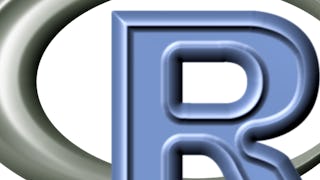Updated in May 2025.
This course now features Coursera Coach! A smarter way to learn with interactive, real-time conversations that help you test your knowledge, challenge assumptions, and deepen your understanding as you progress through the course. This in-depth course starts by walking you through the basics of R programming, from setting up the environment with R and RStudio to understanding its user interface. As you move through the early sections, you'll dive into foundational programming concepts like data types, functions, and vector operations, enabling you to build a solid base in R. You’ll also learn how to handle complex structures like matrices and data frames, making it easy to organize and manipulate data efficiently. As the course progresses, you’ll explore more advanced R capabilities, such as creating and modifying data frames, using the popular dplyr package, and working with relational, logical operators, and loops. The lessons on data manipulation and visualization offer hands-on experience in cleaning and presenting data, covering essential tools like ggplot2 for creating insightful graphs and charts. These skills will help you analyze data and make data-driven decisions more effectively. Finally, the course delves into statistics with exploratory data analysis, hypothesis testing, and linear regression modeling. By mastering these techniques, you'll gain the ability to analyze real-world data, draw meaningful insights, and make predictions. Whether you’re an aspiring data scientist or a statistician looking to hone your skills, this course provides everything you need to succeed in the data science field using R. This course is designed for aspiring data scientists, statisticians, and professionals looking to master R for data analysis. Basic knowledge of programming is beneficial, but not required.















